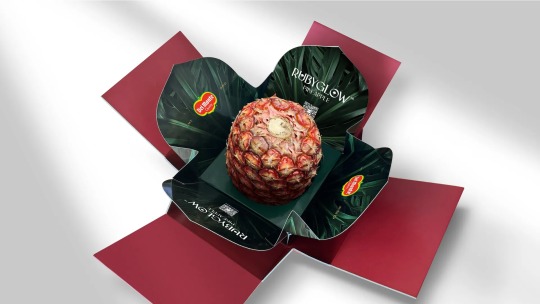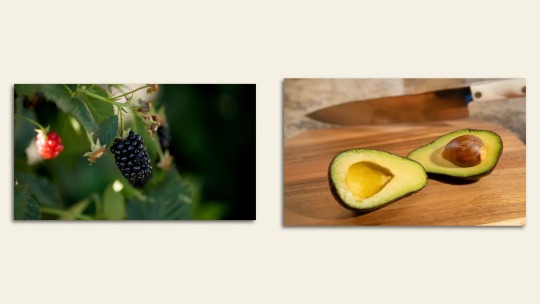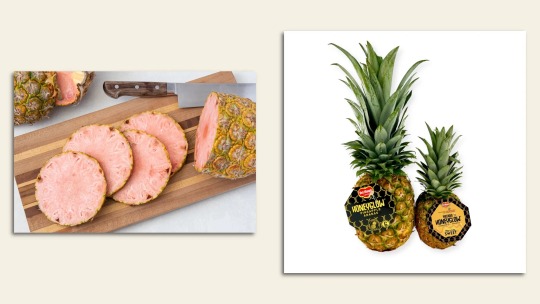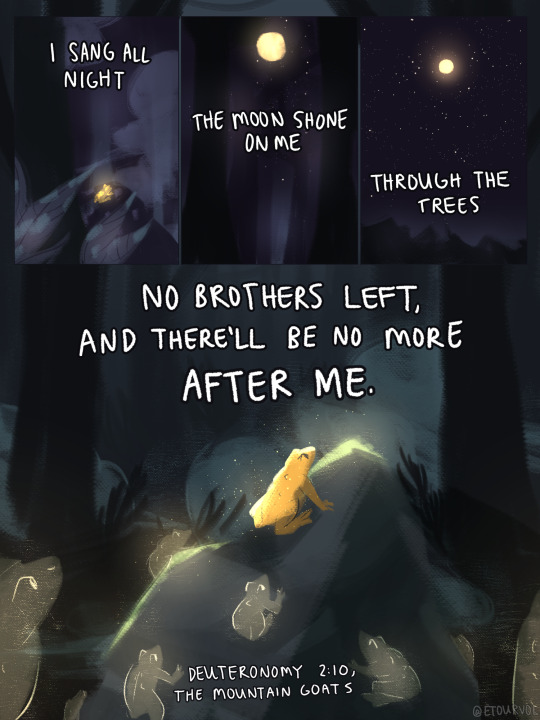#Costa Rica 🇨🇷
Explore tagged Tumblr posts
Text
Science: Behold, The $400 Red Pineapple 🍍
— Jennifer A. Kingson | May 7, 2024

The Rubyglow Pineapple is red on the outside but yellow on the inside. Photo Courtesy of Fresh Del Monte
What's red on the outside, yellow on the inside, and a $395.99 way to garnish your margarita?
The Rubyglow Pineapple, which Fresh Del Monte describes as "an ultra-premium luxury 'designer' fruit that appeals to high-end consumers."
Why It Matters: Agriculture scientists and produce companies are constantly trying to innovate, to improve their plants and tantalize the public.
Fun new fruits have lately included a thornless blackberry (developed in Arkanasas), a "Yellow Submarine" tomato that's yellow and shaped like a peanut (born at Cornell University), and the Luna avocado (out of the University of California, Riverside).

The "SweetArk" thornless blackberry was developed by the Arkansas Fruit Breeding Program, and the Luna avocado at the University of California, Riverside. Lefthand photo: Paden Johnson/University of Arkansas System Division of Agriculture; Righthand photo: Stan Lim/University of California, Riverside
🍍Zoom In: It takes at least a decade to develop a new type of fruit, and the Rubyglow is no exception.
"Grown in Costa Rica after a 15-year development period, the Rubyglow Pineapple has a registered plant patent in the United States," according to a Fresh Del Monte press release.
Its scarcity is key to its price tag: While "only a few thousand" will be produced this year, the Rubyglow will be "available nationwide through select regional grocers" and online retailers.

At left, the "Yellow Submarine" is a new type of tomato; at right, the Rubyglow Pineapple has yellow flesh. Lefthand photo courtesy of Fruition Seeds; righthand photo courtesy of Fresh Del Monte
Zoom Out: The Rubyglow is the latest newfangled pineapple from Fresh Del Monte — and the most expensive.
The Mini Honeyglow was introduced this year as a "personal-size" pineapple (read: small) that's sweeter than most — it costs a mere $11.79 (plus about $30 in shipping).
The Pinkglow Pineapple — launched in 2020, with flesh as pink as deli ham — costs $29 before shipping.
To merit its designer price tag, the Rubyglow "is individually packaged in a beautiful box that unfolds almost like origami," says Food & Wine.
The Bottom Line: Fruit salad is getting ready for a glow-up.

At left, the Pinkglow Pineapple. At right, a standard Honeyglow pineapple sits alongside the "personal-size" version; Images courtesy of Fresh Del Monte
#Science#Red Pineapple 🍍#The Rubyglow Pineapple 🍍#Costa Rica 🇨🇷#Thornless Blackberry | Arkanasas#Yellow Submarine#Yellow Tomato 🍅 | Peanut 🥜 Shaped#SweetArk | Thornless Blackberry#Yellow Submarine | New Tomato#The Pinkglow Pineapple 🍍#The Mini Honeyglow#Fresh Del Monte
0 notes
Text
KENJAKU TICO 🗣️‼️🔥🇨🇷‼️🔥🇨🇷🇨🇷🔥🗣️‼️🇨🇷

Ya ni siquiera es 15 de septiembre, pero me vale picha XDDD
#fanart#ibispaintx#my art#ibispaint art#jjk#jjk fanart#jujutsu kaisen#kenjaku#costa rica#COSTA RICA POTENCIA MUNDIAL 🗣️‼️🇨🇷
22 notes
·
View notes
Text


Yuca😍😍😍
4 notes
·
View notes
Text
ive been scouring the depths of call of duty pages for lik an hr trying to fins a specific skin bc im CONVINCED it has costa ricas flag but idek the name of the skin/operator 😭
#its the one blarg uses/used 💀 he calls it jafar#costa ricas flag is 🇨🇷#if any knowledgeable cod fans see this send help 😭💀‼️#call of duty#call of duty warzone#kiian.txt
4 notes
·
View notes
Photo
YES. The golden toad lived only in one specific forest in Monteverde, and to this day no one is entirely sure why it died out! Those who cared tried very hard to save them, but nothing could be done. The species reached a number so low it simply faded out. It was a tragedy 😭


“no more after me”, a mini comic about the now-extinct golden toad. featuring lyrics from deuteronomy 2:10 by the mountain goats
65K notes
·
View notes
Text

Costa Rica Hatsune Miku
🇨🇷🇨🇷🇨🇷🇨🇷
#hatsune miku#vocaloid#multicultural#artists on tumblr#digital art#miku#us ticos need to stick together#miku is a tica confirmed#costa rican hatsune miku#holds lovingly
454 notes
·
View notes
Text
HERE is the list of the 134 countries that are NOT supporting South Africa's 🇿🇦 claims of genocide against Israel 🇮🇱:
🇦🇩 Andorra
🇦🇴 Angola
🇦🇬 Antigua and Barbuda
🇦🇷 Argentina
🇦🇲 Armenia
🇦🇺 Australia
🇦🇹 Austria
🇧🇸 Bahamas
🇧🇧 Barbados
🇧🇾 Belarus
🇧🇿 Belize
🇧🇹 Bhutan
🇧🇦 Bosnia and Herzegovina
🇧🇼 Botswana
🇧🇬 Bulgaria
🇧🇮 Burundi
🇨🇻 Cabo Verde
🇰🇭 Cambodia
🇨🇦 Canada
🇨🇫 Central African Republic
🇨🇱 Chile
🇨🇳 China
🇰🇲 Comoros
🇨🇬 Congo
🇨🇷 Costa Rica
🇭🇷 Croatia
🇨🇺 Cuba
🇨🇾 Cyprus
🇨🇿 Czech Republic
🇨🇩 Democratic Republic of the Congo
🇩🇰 Denmark
🇩🇲 Dominica
🇩🇴 Dominican Republic
🇹🇱 East Timor (Timor-Leste)
🇪🇨 Ecuador
🇸🇻 El Salvador
🇬🇶 Equatorial Guinea
🇪🇷 Eritrea
🇪🇪 Estonia
🇸🇿 Eswatini
🇪🇹 Ethiopia
🇫🇯 Fiji
🇫🇮 Finland
🇫🇷 France
🇬🇪 Georgia
🇩🇪 Germany
🇬🇭 Ghana
🇬🇷 Greece
🇬🇩 Grenada
🇬🇹 Guatemala
🇭🇹 Haiti
🇭🇳 Honduras
🇭🇺 Hungary
🇮🇸 Iceland
🇮🇳 India
🇮🇪 Ireland
🇮🇹 Italy
🇯🇲 Jamaica
🇯🇵 Japan
🇰🇪 Kenya
🇰🇮 Kiribati
🇰🇵 Korea, North (North Korea)
🇰🇷 Korea, South (South Korea)
🇽🇰 Kosovo
🇱🇦 Laos
🇱🇻 Latvia
🇱🇸 Lesotho
🇱🇷 Liberia
🇱🇮 Liechtenstein
🇱🇹 Lithuania
🇱🇺 Luxembourg
🇲🇬 Madagascar
🇲🇼 Malawi
🇲🇹 Malta
🇲🇭 Marshall Islands
🇲🇺 Mauritius
🇲🇽 Mexico
🇫🇲 Micronesia
🇲🇩 Moldova
🇲🇨 Monaco
🇲🇳 Mongolia
🇲🇪 Montenegro
🇲🇲 Myanmar (Burma)
🇳🇷 Nauru
🇳🇵 Nepal
🇳🇱 Netherlands
🇳🇿 New Zealand
🇳🇮 Nicaragua
🇲🇰 North Macedonia (Macedonia)
🇳🇴 Norway
🇵🇼 Palau
🇵🇦 Panama
🇵🇬 Papua New Guinea
🇵🇾 Paraguay
🇵🇪 Peru
🇵🇭 Philippines
🇵🇱 Poland
🇵🇹 Portugal
🇷🇴 Romania
🇷🇺 Russia
🇷🇼 Rwanda
🇰🇳 Saint Kitts and Nevis
🇱🇨 Saint Lucia
🇻🇨 Saint Vincent and the Grenadines
🇼🇸 Samoa
🇸🇲 San Marino
🇸🇹 Sao Tome and Principe
🇷🇸 Serbia
🇸🇨 Seychelles
🇸🇱 Sierra Leone
🇸🇬 Singapore
🇸🇰 Slovakia
🇸🇮 Slovenia
🇸🇧 Solomon Islands
🇪🇸 Spain
🇱🇰 Sri Lanka
🇸🇪 Sweden
🇨🇭 Switzerland
🇹🇼 Taiwan
🇹🇿 Tanzania
🇹🇭 Thailand
🇹🇴 Tonga
🇹🇹 Trinidad and Tobago
🇹🇳 Tunisia
🇹🇲 Turkmenistan
🇹🇻 Tuvalu
🇺🇦 Ukraine
🇬🇧 United Kingdom (UK)
🇺🇸 United States of America (USA)
🇺🇾 Uruguay
🇻🇺 Vanuatu
🇻🇦 Vatican City
🇻🇳 Vietnam
🇿🇲 Zambia
🇿🇼 Zimbabwe
448 notes
·
View notes
Text

Rufous-vented ground cuckoo (Neomorphus geoffroyi) from Costa Rica 🇨🇷
The rufous-vented ground cuckoo (Neomorphus geoffroyi) is a Vulnerable species of cuckoo in the tribe Neomorphini of subfamily Crotophaginae. It is found in Bolivia, Brazil, Colombia, Costa Rica, Ecuador, Nicaragua, Panama, and Peru.
The Rufous-vented Ground-Cuckoo is a beautiful but infrequently encountered bird. Like the other four species of ground-cuckoo in its genus, it is renowned for its scarcity and its highly elusive habits.
The IUCN has assessed the rufous-vented ground cuckoo as Vulnerable.
Photo by:©️Lior Berman@photolior
71 notes
·
View notes
Text
I've been trying to learn the world flags so I can identify them (for funsies) and I'm going by continent, starting with America because I am here 🇸🇻 💙
(Putting this under a readmore because longish post about thing that's probably not v interesting so I dont wanna be too annoying BUT. I wanna talk abt it a little anywayz sooo)
It's been SOOO fun, it's really exciting to see a random flag somewhere and to know whose flag it is : -D I passed by a travel agency poster thing with a bunch of South American and Caribbean flags and ahcdbjncd it feels so nice to know things
(only thing is that I've been pronouncing every country name in spanish, which would be correct for most of South America but like. not All of it, I'm sorry Suriname I didnt know the E is silent.. also 4 the Caribbean islands srry 4 pronouncing it Hamáica and Ay-tee(Haití) sobS)
I've been ignoring the USA and Canada flags completely, so a funny side effect of tht is I've been grouping up flags in categories where those 2 would fit, but I only notice a while after hbjnHBN
I was thinking "Out of the America flags, I can only think of 2 that are a vertical tricolor flag with white on the middle and red in one (or 2) of the sides.. Mexico 🇲🇽 and Perú 🇵🇪 😁" .. I forgor canada exists
And I was thinking "Oh there's SO many flags with the france colors here, there's Costa Rica 🇨🇷, Panamá 🇵🇦, República Dominicana 🇩🇴, Chile 🇨🇱, Cuba 🇨🇺, Puerto Rico 🇵🇷, Paraguay 🇵🇾, and Belice 🇧🇿 technically 😁, so many stars too" .. I forgor abt USA
Thinking also of the few flags that are a tricolor flag with white on the middle and blue on the sides,, El Salvador 🇸🇻 mi amor mi cielo mi vida she's in there with Guatemala 🇬🇹, Honduras 🇭🇳, Nicaragua 🇳🇮 and Argentina 🇦🇷
I'm excited to learn the rest of the flags of the other continents and see which ones I like the most, atm my favorites are El Salvador 🇸🇻(which will never change because I'm VERY biased) Bahamas 🇧🇸 and Trinidad and Tobago 🇹🇹, they look SO nice.. I'm excited to get to Africa, Botswana's flag 🇧🇼 looks super nice too.
(Hope the emojis aren't annoying, I included them so you don't have to google them)
Anytime I start even Thinking about flags, I inevitably spend at least an hour looking at them and I open a Million wikipedia and googleimages tabs about it.. I think it's been like 2 hours since I started typing this because I kept getting distracted with that.
I love any chance I get to talk about flags : -]
#personal#learning is SO hard; maybe tht's why I'm so proud of this.. I think it's been fun and not torture to learn these bc it's pictures#I just need to put the right image and the right name together#and learning things visually might be easier to do? idk. it's been a while since I've learnt something successfully; so Im rly happy
41 notes
·
View notes
Note
Feliz dia de la independencia Costa Rica uwu 🇨🇷🇨🇷🇨🇷🇨🇷🇨🇷🇨🇷🇨🇷
FELIZ CUMPLE COSTA RICA
43 notes
·
View notes
Text

Back after a week in Costa Rica 🇨🇷✈️💙❤️🤍
#cute little toes#foot feddish#feetish#feetpicwant#foot soles#painted toes#feetphotography#candy toes#painted toenails#feetcurves#feetfinder#footporn#bare foot#foot lover#feetpose
55 notes
·
View notes
Text

[Click for better quality]
Panchito's Week, day 16 – Vestuarios Coloridos
Happy Independence Day! Feliz dia de la independencia! Today is the day of the independence in Mexico, but the holiday was also yesterday in El Salvador(🇳🇮), Guatemala(🇬🇹), Honduras(🇭🇳), Nicaragua(🇳🇮), and Costa Rica(🇨🇷)! And september 21th is Belize's(🇧🇿) too! Happy birthday to all these countries!
#panchito pistoles#panchito romero miguel junipero francisco quintero gonzalez#the three caballeros#latam#mesdelostrescaballeros2024#brart
20 notes
·
View notes
Text
giantrooksmusic beyond grateful to be a part of the FITF tour in Latin America. tysm @louist91 for having us 🫶
vamos 🇧🇷🇺🇾🇦🇷🇵🇾🇨🇱🇵🇪🇨🇴🇨🇷🇲🇽
May 08 | Brasil - Rio de Janeiro
May 11 | Brasil - São Paulo
May 12 | Brasil - Curitiba
May 15 | Uruguay - Montevideo
May 18 | Argentina - Buenos Aires
May 21 | Paraguay - Asunción
May 24 | Chile - Santiago
May 26 | Peru - Lima
May 28 | Colombia - Bogotá
May 30 | Costa Rica - San Jose
June 01 | Mexico - Mexico City
The Giant Rooks via Instagram [26.4.2024]
48 notes
·
View notes
Text
Eduardo Camavinga - SMAU
Summary: After the euros, your man decides to take you on vacation…
Genre: Social AU, SMAU, Eduardo Camavinga x reader
Warnings: none
Author’s note: Couldn’t not write something for cama🤭
camavinga's post



Liked by yourusername, judebellingham and others...
camavinga costa rica 🇨🇷
COMMENTS
vinijr Enjoy brother 💪🏿 (❤️ by author)
username1 waiting for u in Madrid
username2 EL MEJOR
username3 🔥🔥
yourusername's post



Liked by carmavinga, vinijr and others...
yourusername sun kissed☀️🇨🇷
COMMENTS
carmavinga mon étoile😍 yourusername t'aime❤️
username SOO CUTE username2 my favorite couple ever
username she's so prettyy username4 yea right??
yourusername's story

camavinga’s story

Tweets


—————————————————————————
#x reader#fanfic#smau#eduardo camavinga#camavinga#eduardo camavinga x reader#eduardo camavinga fanfic#vinicius jr#jude bellingham#x you smau#social media#instagram
42 notes
·
View notes
Text
Yeap, I should have posted this THE day, but I wasn't feeling very well and and and



🇨🇷: oh every year you make a better combination!
🇦🇷: thanks! And you make the better couples!
🇵🇾: *eeeeeeh (because she's cosplaying James Sunderland and Costa Rica is Maria so, if you know the SH2, you know this isn't a good couple concept HAJKSJSJJS)
Of course I had to make Venezuela as Juri Han, because her characterization it's cat coded, and my beautiful Argentina is Cammy. I love the detail that C is British and Argentina clearly changed the flag 🇬🇧 in her costume, because not doing it would be very "Cold chest" of her part, innit?
#halloween#countryhumans#art#countryhumans art#countryhumansargentina#countryhumansvenezuela#digitalart#sf6 cammy#cammy white#street fighter#juri han#countryhumansparaguay#countryhumanscostarica
12 notes
·
View notes
